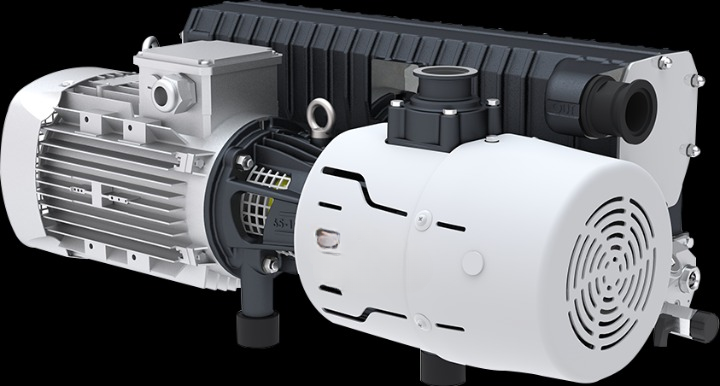Maintaining a rotary vane vacuum pump is crucial for ensuring its optimal performance and longevity. This guide will provide you with detailed steps and best practices for keeping your rotary vane vacuum pump in top shape. By following these tips, you can prevent common issues and extend the life of your equipment.
Understanding Your Rotary Vane Vacuum Pump
It is crucial to comprehend the operation of your rotary vane vacuum pump before doing any maintenance. This pump compresses and moves gases or air to create a vacuum by the use of revolving vanes. Frequent maintenance ensures efficient operation by keeping the vanes and other components operating as intended.
Regular Inspection is Key
An vital part of maintaining a rotary vane vacuum pump is routine inspections. Start by looking for any obvious wear or damage on the pump’s external components. Examine the seals, connections, and housing. Check for any leaks or strange noises that could point to a problem. Frequent inspections assist in finding problems early on, before things get worse.
Keeping the Pump Clean
A vacuum pump with a clean rotating vane runs more effectively. The accumulation of dust and dirt within the pump might have an impact on its functionality. First, detach the pump from the power source and turn it off to clean it. Dust off the external components using a soft brush or a vacuum cleaner. Please see the manufacturer’s recommendations for internal cleaning.
Checking and Replacing Filters
When it comes to safeguarding your rotary vane vacuum pump, filters are essential. They keep impurities out of the system so they can’t harm it. Check the filters frequently for dirt accumulation or clogging. As advised by the manufacturer, or whenever you observe a decline in performance, change the filters. To guarantee the best possible pump performance, clean or replace the filters.
Monitoring Oil Levels and Quality
The vanes and other internal parts of a rotary vane vacuum pump are lubricated by the oil. To make sure the oil level is within the advised range, check it periodically. Reduced efficiency and higher wear might result from low oil levels. Observe the oil quality as well. It is best to change tainted or deteriorated oil right away to prevent further harm to the pump.
Performing Oil Changes
Keeping your rotary vane vacuum pump maintained requires routine oil changes. Oil may lose its lubricating qualities or become polluted with particles over time. When changing the oil, adhere to the manufacturer’s instructions. Generally, an oil change should occur every few months or after a predetermined amount of operational hours. Before changing the oil, make sure the pump is off and cooled.
Inspecting and Replacing Vanes
An essential part of a rotary vane vacuum pump is the vanes. Because of frequent use, they may eventually wear out. Check the vanes frequently for indications of damage or wear. It could be time to replace the vanes if you experience decreased performance or strange noises. Wearing out the vanes on a pump can be avoided by replacing them to maintain sustained efficiency.
Checking for Leaks
Your rotary vane vacuum pump’s performance might be greatly impacted by leaks. Check for leaks regularly in the piping connected to the pump. Examine the seals and connections carefully. As soon as you notice a leak, fix it by tightening fittings or changing any damaged seals. Leaks should be quickly fixed to preserve the vacuum integrity and pump efficiency.
Maintaining Proper Ventilation
A rotating vane vacuum pump can only function at its best when there is adequate airflow. Make sure the pump is situated in a location with sufficient ventilation. Overheating can occur if the pump is too close to other equipment or if ventilation is obstructed. To provide adequate ventilation and cooling, keep the area surrounding the pump free of obstructions.
Calibration and Adjustment
To make sure your rotary vane vacuum pump is operating within the intended parameters, calibrate and adjust it regularly. Calibration is comparing the pump’s performance to established benchmarks and adjusting as needed. For calibration instructions, refer to the manufacturer’s instructions. Vacuum levels are accurate and dependable when properly calibrated.
Training and Operation
Maintaining the longevity of your rotary vane vacuum pump requires proper operation. Make certain that all operators have received the necessary training on usage and upkeep techniques. Premature wear or damage can result from improper operation. Give instruction on the proper ways to start, stop, and observe the pump. Operators with education make a positive impact on the equipment’s general health.
Keeping Documentation
It is advantageous to keep thorough records of all maintenance operations. Keep track of all repairs, oil changes, filter replacements, and inspections. Maintaining thorough documentation makes it easier to monitor the pump’s performance over time and aids in problem solving. Additionally, timely completion of maintenance work is ensured by regular documentation.
Understanding Warranty Terms
Understand the conditions of your rotary vane vacuum pump’s warranty. Knowing what is covered under warranty can make it easier for you to take advantage of any necessary replacement or repair services. In order to avoid nullifying the warranty, make sure you adhere to the manufacturer’s instructions. Following the terms of the warranty helps safeguard your investment.
Using Quality Replacement Parts
Use premium parts that are compatible with your rotary vane vacuum pump when replacing any worn out parts. Poor quality parts might cause further problems and have an impact on the pump’s functionality. To guarantee compatibility and dependability, always refer to the manufacturer’s recommendations for replacement parts.
Addressing Unusual Sounds
Your rotary vane vacuum pump may make unusual noises that point to possible problems. Keep an ear out for any strange noises, such rattling, screaming, or grinding. These noises could be indicative of imbalances or mechanical issues. To stop additional damage, look into any strange noises and take quick action to rectify them.
Troubleshooting Common Issues
Rotating vane vacuum pumps frequently have leaks, strange noises, and decreased performance. Examine seals and connections, check oil levels, and examine vanes to identify the source of these issues. For details on particular problems and their fixes, consult the manufacturer’s troubleshooting manual.
Seeking Professional Help
You might need to get professional assistance if your rotary vane vacuum pump is giving you complicated problems. Problems that go beyond regular maintenance can be identified and fixed by qualified professionals. Correct and safe execution of any repairs or modifications is ensured by professional help.




